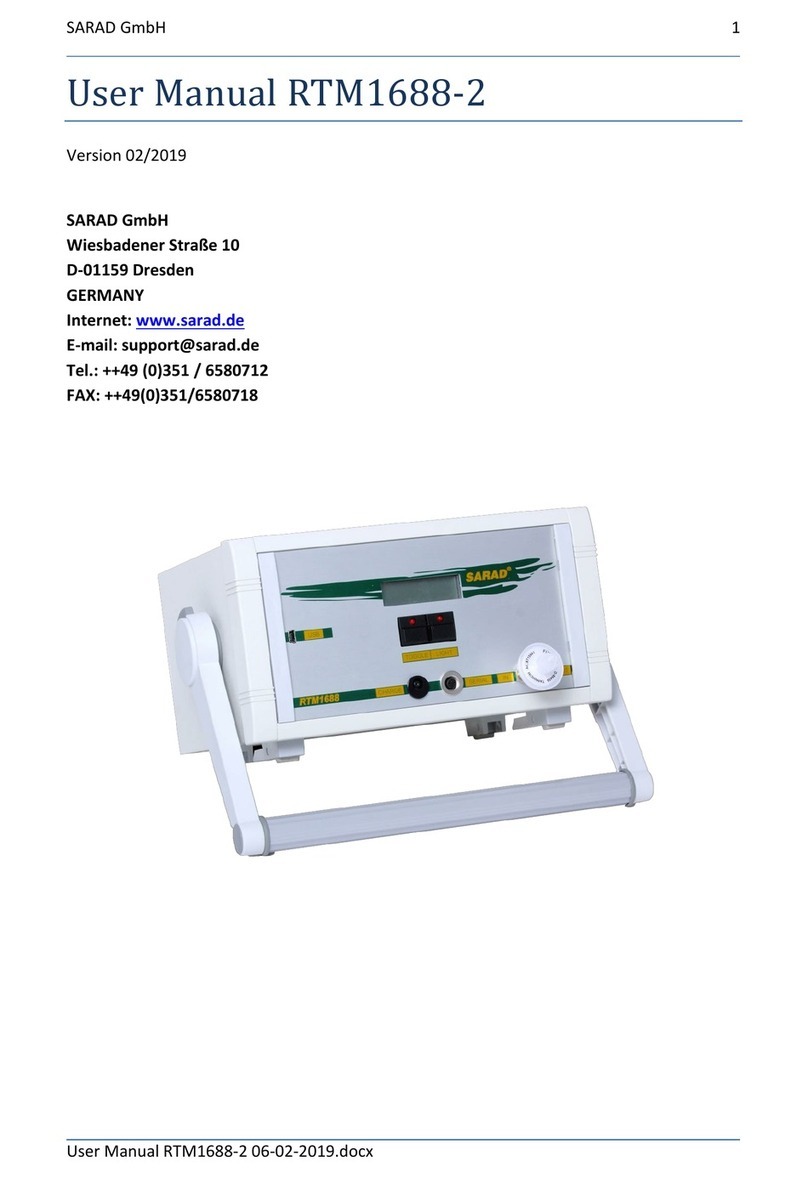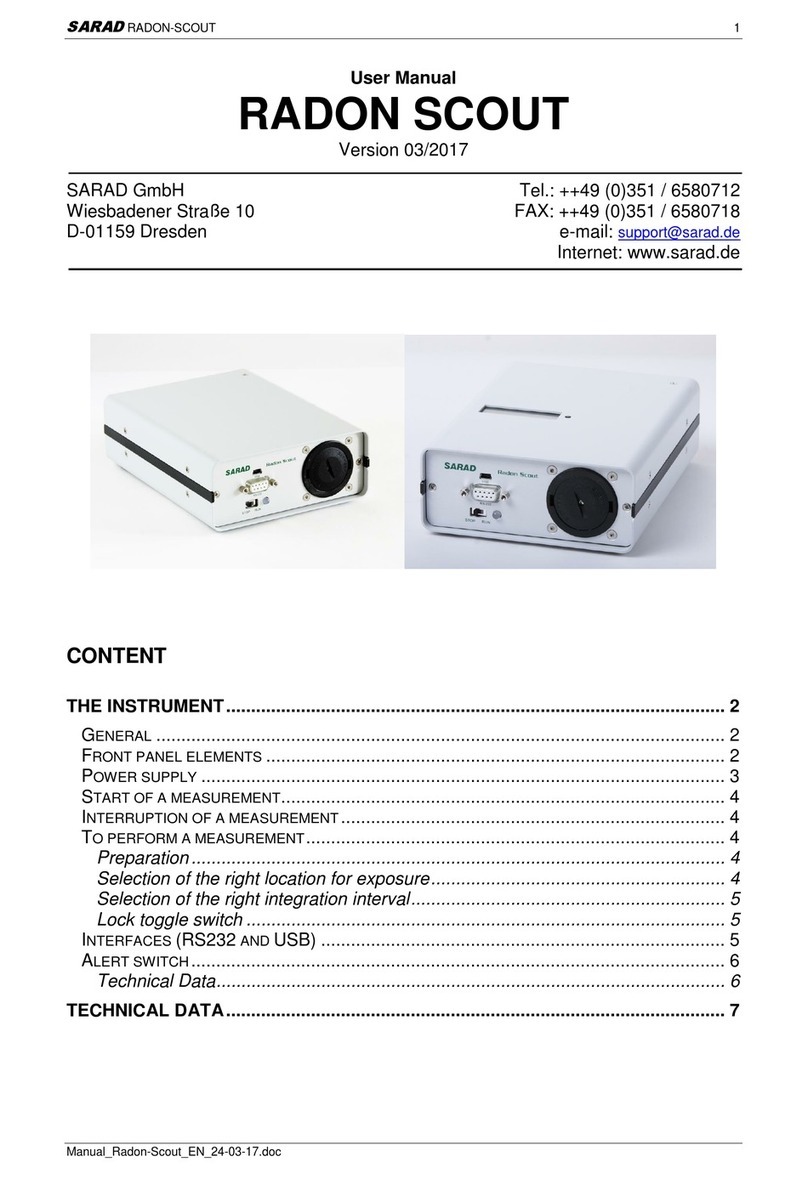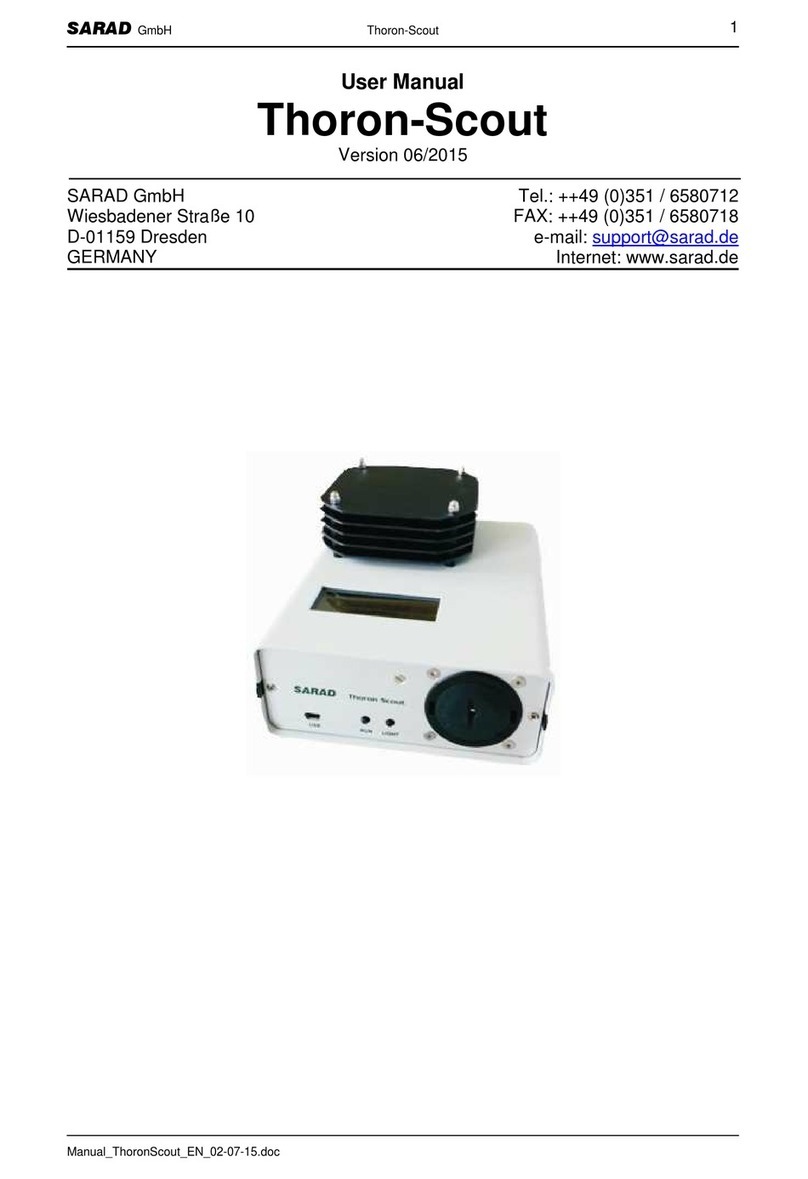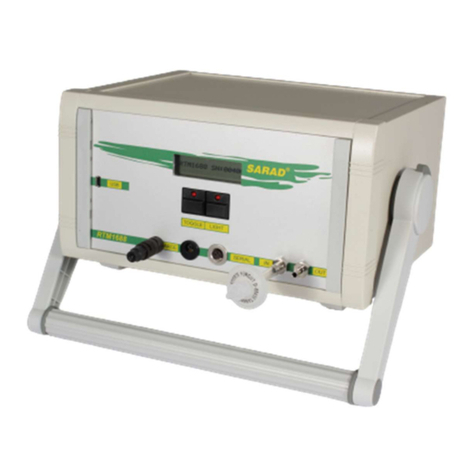
MyRIAM - 7 -
Manual_Myriam_EN_10-04-08.doc (c) SARAD GmbH
If the count rate is higher than 50000 cpm, the instrument will show “OVERLOAD” and the
dose values are not longer displayed. The dead time is approximately 35 % at this activity
level. The measurement is still continued and the results can be assessed later on (after
downloading the data to a PC).
Dead time ratios higher than 10 % are displayed on the display (upper line of the dose
display)
Data transfer
The communication between the Myriam and the PC is realised by an infrared data link. The
infrared interface has to be connected to any USB port of
the PC using the USB adapter cable. If the infrared interface
is connected for the first time, a driver has to be installed
(see software manual).
The Myriam has to be placed in the middle of the interface
unit in that way that the charge receptacle at the
instruments bottom panel fits into the hole of the plate. The
instrument has to be switched on. Each data transfer is
initiated by the PC software (remote control).
The stored time distribution, set-up parameters as well as the recent display values can be
read even if the measurement is running. To change set-up parameters, the measurement
must be stopped before.
Battery and Charger
The Myriam is powered by internal NiMH batteries. Using the “Sampling Mode” (running
pump), an operation period of more than 20 hours is guaranteed. The battery recharge takes
about two hours. A charger is included in the delivery.
If the battery voltage drops below a critical level while the
instrument is in the stand by mode, “BATT. LOW” will .
A less or more filled battery symbol on the display shows
the battery voltage and can be used to estimate the
remaining operation time. Please note that the battery
capacity depends on the temperature.
Take care for a completely charged battery at the begin of a
longer mission.
If the voltage drops below a warn level, the sounder signalises the critical state by a short
beep. The measurement can still be continued for a few hours until the battery becomes
completely discharged. Then, the instrument switches off automatically. In this case, please
recharge the Myriam before switching on again and downloading the data.
If the instrument is not in use for a longer period, the batteries have to be discharged and
recharged each 2 to 3 month. The Myriam must not be charged during a sample with running
pump. The charging during a filter analysis is possible. Please note that the charger is no
continuous power supply. After finishing the recharge process the charger disconnects the
































